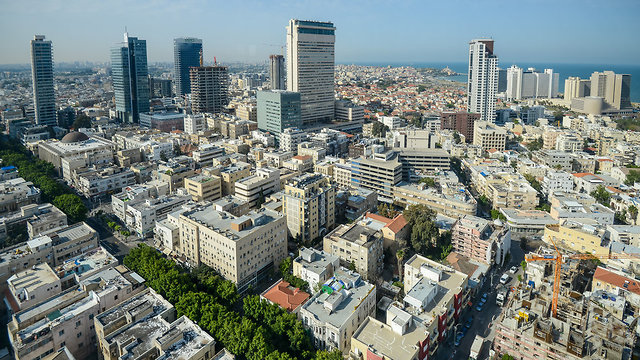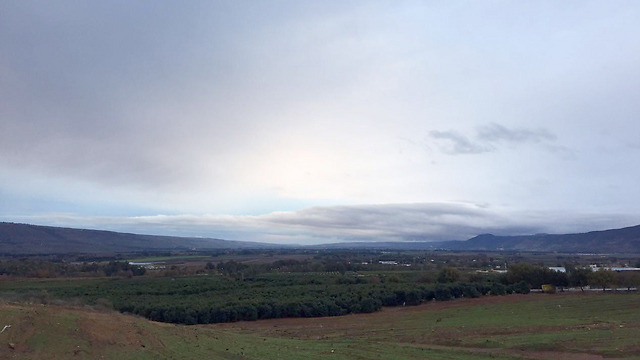
Tel Aviv
צילום: shutterstock
A hole in the heart of the Tel Aviv metropolis
Coastal cities in Israel, like many cities around the world, are likely to experience increased land subsidence as a result of declining groundwater levels
Recently, the residents of Bnei Brak, a city in the Tel-Aviv metropolitan area, awoke to a phenomenon that was only previously known to occur in the Dead Sea and its surrounding areas: a sinkhole opened up on Jabotinsky Street, bordering the neighboring city of Ramat Gan. This caused severe disruptions to one of the busiest intersections in the Tel Aviv Metropolitan area, which is already experiencing heavier traffic than usual due to light rail construction.
The police blocked two lanes on Jabotinsky Street for more than 24 hours, while experts planned on how to repair the sinkhole, which was a complex operation due to the proximity of the light rail construction as well as the city’s drainage system.
This is not the first time that a sinkhole has opened up in the Gush Dan (Tel Aviv) area. Earlier this year, a similar cavity formed in Petah Tikva, which was also in the vicinity of the light rail construction site.
The emergence of sinkholes appears to be part of a more widespread phenomenon, where accelerated urban development is leading to the recession of groundwater, thus weakening the bedrock of cities all over the world, and now also in Israel.
Why is Venice sinking?
The over-pumping of aquifers for drinking water purposes as well as the development of underground infrastructure have resulted in the lowering of groundwater levels in urban areas.
In places where the city’s foundation is made of clay or sand, which is usually the case with coastal cities, lowering the groundwater level causes the surface to sink.
Apart from the emergence of sinkholes, another consequence of land subsidence is an increase in the number of flood events in low-lying urban areas. The most well-known floods are the record-breaking high tides that regularly inundate the San Marco Square in Venice.
The high waters of Venice are not new, however, in recent years the number of incidents has drastically increased as a result of the artificial lowering of the groundwater level, which has caused the Island to sink further.
The flooding events in Venice are usually only attributed to a rise in sea level, when in fact the city's sinking also plays an important role.
Surface water measurements in many cities around the world, including Bangkok, Shanghai and Tangier Island in the Chesapeake Bay of the United States, show that flooding has increased as a result of land subsidence associated with the over-extraction of groundwater which entails a water table drawdown.
Probably the most notorious current example of land subsidence is the city of Jakarta, which is sinking at an average rate of 1-15 cm a year, making it the fastest sinking city in the world. Excessive pumping of groundwater coupled with rising sea levels caused by climate change and rapid urbanization threatens the Indonesian capital to become partly uninhabitable. By 2050, scientists fear that some areas of the city will be entirely submerged if nothing is done immediately.
A 10-meter drop in groundwater level
Many urban areas have been developed over the past few decades on the Israeli coastal plain. Here, the foundation is mainly made up of sand and clay. The map of the groundwater level published by the Israeli Hydrological Service shows a "hydrological crater," or subsidence of the surface, just below every town located in this area.
One major case of land subsidence in Israel is in the Hula Valley in the north. Foundation levels collapsed more than seven meters over time after wetlands in this region were drained. The land subsidence was partly caused by a drop in the groundwater level, as well as the combustion of organic matter that was contained in the soil.
Due to an increase in the construction of high-rise buildings in the Gush Dan area, and large water pumps used during the erection of the light rail red line, groundwater levels have dropped. Tunnels for the light rail are being built 30 meters deep. Large quantities of groundwater are pumped into a nearby canal, which has created a wide and deep hydrological crater beneath the construction area. The pumping might ultimately lead to a 10-meter drop in groundwater levels.
It is highly probable that the extraction of groundwater through construction efforts will continue to cause sinkholes and may lead to other phenomena related to subsidence, which can affect the stability of buildings, the gradient of drainage systems, as well as that of the railroads nearby.
Reprinted from ZAVIT – Israel's Science and Environment News Agency













